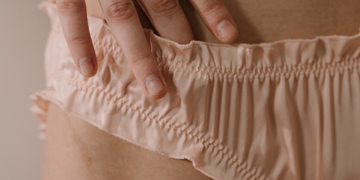How do you know if you have a yeast infection?

If you’ve ever had a yeast infection, you know how real the discomfort can be. While the itching and the burning sensation are sometimes hard to miss, other times it’s not that obvious. The key to getting rid of a yeast infection is being able to detect it and properly treat it, as well as work to prevent it from coming back.
What's a yeast infection?
A yeast infection is a fungal infection that can cause irritation, discharge, and intense itchiness in the vagina and vulva. Yeast infections can also affect the mouth, esophagus, skin, and in more serious cases, the bloodstream. About 3 in 4 women will experience a vaginal yeast infection in their lifetime and once you get a vaginal yeast infection, you’re more likely to get another one down the road.
What are the signs of a yeast infection?
It’s estimated that 75% of women will get a yeast infection at some point in their lifetime. The symptoms of a vaginal yeast infection are primarily characterized by itching, burning, and a change in the consistency of your discharge.
With a yeast infection, your discharge will be thick, clumpy, and white (some compare it to cottage cheese), but is usually odorless. Yeast infections also cause your vagina to swell, usually from the itching.
Vaginal yeast infections are most likely to occur the week before your period starts. Before you get your period, your body produces hormones that trigger menstruation. These hormonal changes can also trigger an imbalance of the natural bacteria and yeast in the vagina and cause a yeast infection.
If you think you may have a yeast infection, contact your primary care provider immediately for assessment and treatment.
What causes a yeast infection?
A yeast infection is the result of an overgrowth of a fungus called candida. Candida lives healthily in your body all the time but can begin to cause problems if it multiplies. Things like stress, lack of sleep, poor eating habits, and a hormonal imbalance can cause the candida fungus to multiply and lead to infection.
Also, certain antibiotics have been found to cause yeast infections. Yeast infections are not considered STIs because they are often caused by factors other than sexual activity. Still, it is possible to get a yeast infection from a partner who has one.
Certain life stages can also increase the chance of a yeast infection. During pregnancy, estrogen levels increase and the balance of bacteria and yeast in your vagina is altered. Because of this, it’s very common to experience a yeast infection when you’re pregnant. Additionally, postpartum yeast infections are normal and can be attributed to certain antibiotics, after-effects of vaginal birth, and hormonal changes.
Additionally, different medical conditions may increase your likelihood of a yeast infection. There is a link between diabetes and yeast infections due to changing blood sugar levels. Diabetes can cause your blood sugar levels to spike. The yeast in our bodies feeds off sugar, so this increase in sugar causes the yeast to grow and can lead to a yeast infection.
Shop the article
How to treat a yeast infection?
While you can test for yeast infections at home, it is important to consult your primary care provider if you suspect you may have a yeast infection. Your primary care provider might prescribe a one-time dose of fluconazole if your infection is severe.
Fluconazole is an antibiotic that eradicates fungus and yeast throughout your whole body but can cause side-effects like headaches and stomach pain. If you are pregnant, you should not take fluconazole. Instead, it is recommended to use a topical yeast infection treatment during pregnancy.
Suppositories are an effective and common treatment option for yeast infections and can be bought over-the-counter on the recommendation of your primary care provider. They are solid, egg-shaped balls of medicine that you insert into your vagina using a plastic applicator once a day.
The length of the course of suppositories depends on the brand, but they usually take 3-7 days to treat a yeast infection. There are also antifungal creams that work similar to suppositories, but suppositories provide symptom relief sooner.
Additionally, there are proactive and natural steps you can take to help protect against yeast infections. This includes avoiding scented products in your vaginal area, avoiding douching, and making sure to wipe front to back after using the bathroom. Experts warn against home-remedies found on the internet, such as inserting greek yogurt into your vagina.
Yeast infections are not typically dangerous as long as you treat them properly. With treatment, the infection can heal in as little as three days. Left untreated, the fungus can circulate throughout your body and cause more serious complications.
If you have a yeast infection, try to refrain from having sex until it heals to avoid giving it to your partner and worsening the infection. Try avoiding products like scented tampons, pads, and certain soaps as the chemicals within them can throw off your PH balance.
It’s never fun to play guessing games to figure out what is going on in your body. At Winx Health (formerly known as Stix), we believe that knowledge is power and the more we know what is going on in our bodies, the better. Head to our Real Talk blog for the inside scoop on all things women’s health.
Keep Reading

Yeast infection vs. UTI: Which one do I have?
November 13 • 3 min

How do yeast infections affect sex?
Sep 19

What your vaginal discharge is trying to tell you
Nov 10









